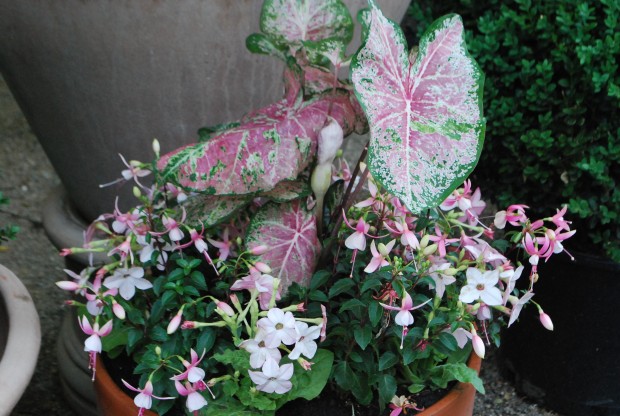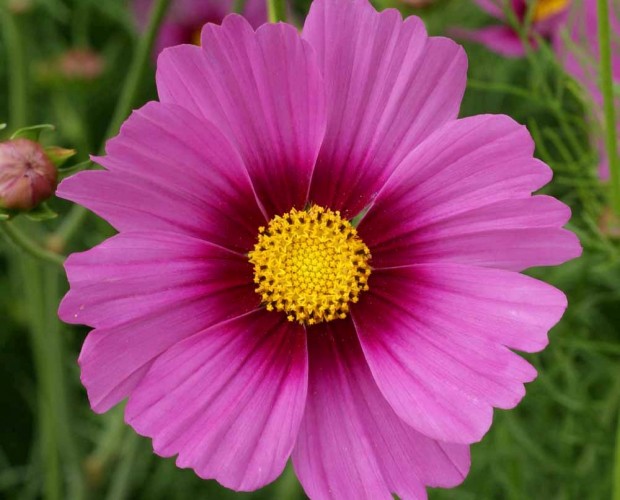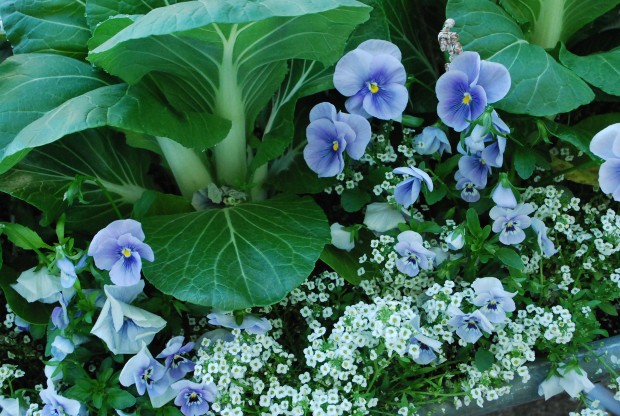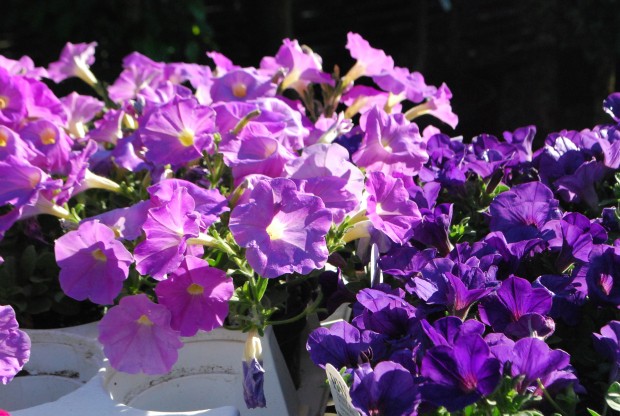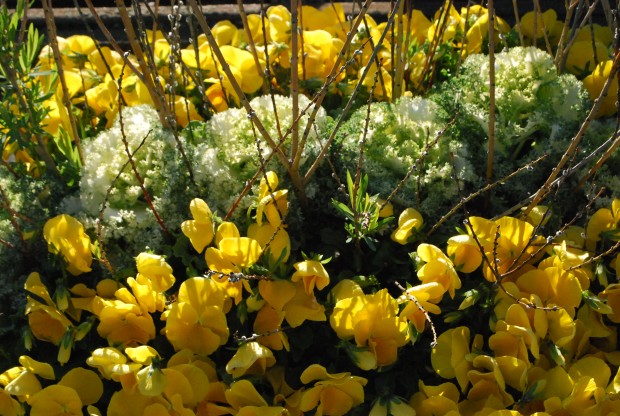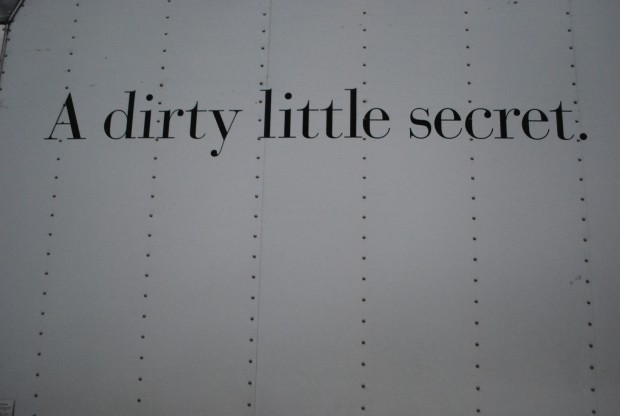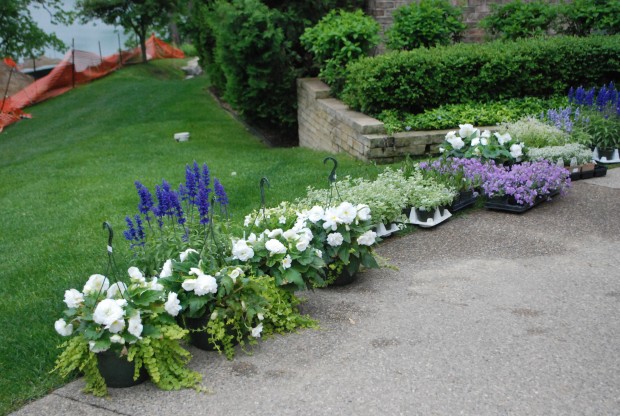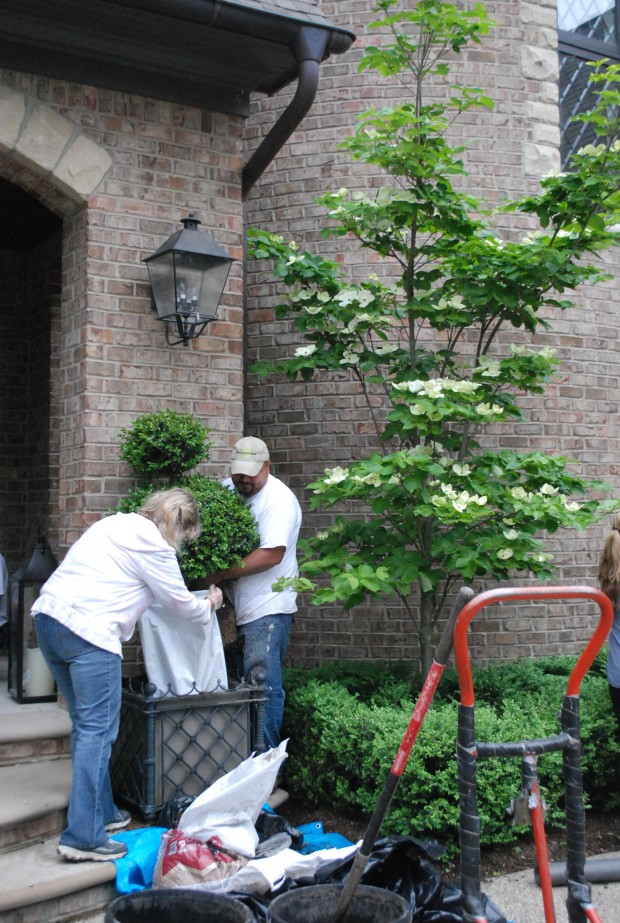 The past few days have been all about the rain. Torrential downpours. Wind, thunder-unsettled weather. I don’t know how many inches of rain in all-but I think it was a lot. In the past week we have had 24 degrees overnight, and 88 degrees during the day. In my neighborhood-three phone poles blown over. Frost, hail and drought, wild temperature fluctuations-and now the big rains. All of April was too cold and wet to work out. I cannot remember a year when my landscape crews could not get out until late April. This is no news- any gardening effort is subject to and influenced by the weather.
The past few days have been all about the rain. Torrential downpours. Wind, thunder-unsettled weather. I don’t know how many inches of rain in all-but I think it was a lot. In the past week we have had 24 degrees overnight, and 88 degrees during the day. In my neighborhood-three phone poles blown over. Frost, hail and drought, wild temperature fluctuations-and now the big rains. All of April was too cold and wet to work out. I cannot remember a year when my landscape crews could not get out until late April. This is no news- any gardening effort is subject to and influenced by the weather.
 I do not think I have ever seen rain fall so hard and so fast-as I did 2 days ago. The shop property is sandy, which we top dressed with gravel. Standing water at my place- unprecedented. I have my own perfect storm going on. Several landscape installations which could not be finished in April are due-now. The planting of the annuals and containers-due now. Some earlier plantings have frost damage. This is more excitement than I would ask for, but every year has its challenges and troubles.
I do not think I have ever seen rain fall so hard and so fast-as I did 2 days ago. The shop property is sandy, which we top dressed with gravel. Standing water at my place- unprecedented. I have my own perfect storm going on. Several landscape installations which could not be finished in April are due-now. The planting of the annuals and containers-due now. Some earlier plantings have frost damage. This is more excitement than I would ask for, but every year has its challenges and troubles.
 I was not really unhappy about the rain. Our spring has been very dry. Every plant that wakes up come spring is programmed to grow. That growing requires moisture. The trees especially needed a big drink. My hydrangeas came out of dormancy reluctantly. Our spring came slow-the dry weather played a big part in that. I am so happy for the rain-even though it is late.
I was not really unhappy about the rain. Our spring has been very dry. Every plant that wakes up come spring is programmed to grow. That growing requires moisture. The trees especially needed a big drink. My hydrangeas came out of dormancy reluctantly. Our spring came slow-the dry weather played a big part in that. I am so happy for the rain-even though it is late.
 The torrent of rain meant that all of the plants at the shop were fine-no one needed to drag a hose. What a relief. Water from the sky is life sustaining water. Our plants loved the rain. Water from the hose is a temporary fix in dry times. I cannot really explain what I mean by this, but water from the sky is better water than the water from the hose. Rainy days-I love them. Rain from the sky makes plants grow and thrive. The days that I have to drag the hose-a chore day. Automatic irrigation needs a gardening person in charge. Automatic irrigation on auto can kill trees, shrubs, perennials and annuals. Supervise your irrigation system!
The torrent of rain meant that all of the plants at the shop were fine-no one needed to drag a hose. What a relief. Water from the sky is life sustaining water. Our plants loved the rain. Water from the hose is a temporary fix in dry times. I cannot really explain what I mean by this, but water from the sky is better water than the water from the hose. Rainy days-I love them. Rain from the sky makes plants grow and thrive. The days that I have to drag the hose-a chore day. Automatic irrigation needs a gardening person in charge. Automatic irrigation on auto can kill trees, shrubs, perennials and annuals. Supervise your irrigation system!
 I cannot speak to the science of the effects of spring rain. I only have my instincts. In my opinion, every plant bathed in late spring rain seems energized.
I cannot speak to the science of the effects of spring rain. I only have my instincts. In my opinion, every plant bathed in late spring rain seems energized.
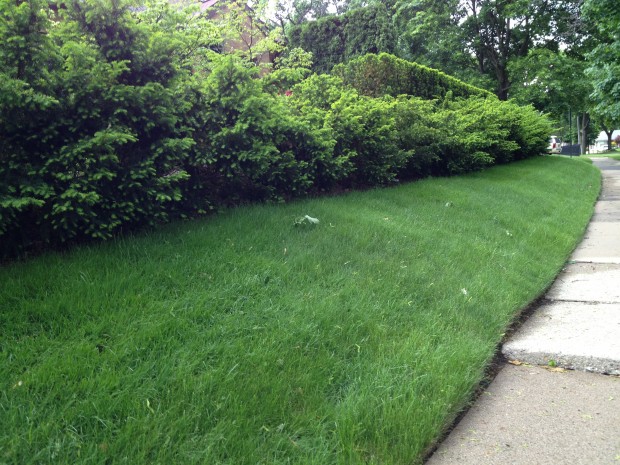 My own property-vividly green. The grass looks like fur. Thick and vigorous. The yews are covered with a layer of lime green new growth. Every plant looks energized, and juicy.
My own property-vividly green. The grass looks like fur. Thick and vigorous. The yews are covered with a layer of lime green new growth. Every plant looks energized, and juicy.
 Lush life-this describes my idea of late spring in just two words. Given the heavy rains, all of my plants are putting on weight and substance in a beautiful way. The lime green color of new growth is why I love that lime color in any plant. Fresh and new. The dwarf spruce and hellebores in the above picture will turn towards emerald green, later in the spring. The Sum and Substance hostas that retain their lime green color all season long- how I value that memory of spring.
Lush life-this describes my idea of late spring in just two words. Given the heavy rains, all of my plants are putting on weight and substance in a beautiful way. The lime green color of new growth is why I love that lime color in any plant. Fresh and new. The dwarf spruce and hellebores in the above picture will turn towards emerald green, later in the spring. The Sum and Substance hostas that retain their lime green color all season long- how I value that memory of spring.
 Another month, another day, another time of year, this picture would look so much different. This level of lush speaks to late spring. Though I am so busy with work, I try to take the time to enjoy this moment. The bad weather aside, there is so much to appreciate this time of year. In my garden the voices are fresh. A new season has begun. The intense flush of growth from the trees to the roses and perennials-so exciting. This photograph of my garden does not really express how beautiful it was to see it in person.
Another month, another day, another time of year, this picture would look so much different. This level of lush speaks to late spring. Though I am so busy with work, I try to take the time to enjoy this moment. The bad weather aside, there is so much to appreciate this time of year. In my garden the voices are fresh. A new season has begun. The intense flush of growth from the trees to the roses and perennials-so exciting. This photograph of my garden does not really express how beautiful it was to see it in person.  Last year at this time, my roses were struggling to emerge from an extended and killing late April frost. Needless to say, I did not have much in the way of roses last year. Today, every rose is loaded with buds. Loaded with promise. I have not written about this, but the lilacs in my neighborhood have been spectacular this spring. I would venture to say-the best ever. What I see makes me long to grow them. But in fact every spring season favors some plants over others. My advice? Grow lots of plants. One or several of them will surely handle whatever the weather has to dish out. If you do not grow any roses-I would encourage you to try them. n early June, they will hold your heart. They smell good. They will encourage you to garden on.
Last year at this time, my roses were struggling to emerge from an extended and killing late April frost. Needless to say, I did not have much in the way of roses last year. Today, every rose is loaded with buds. Loaded with promise. I have not written about this, but the lilacs in my neighborhood have been spectacular this spring. I would venture to say-the best ever. What I see makes me long to grow them. But in fact every spring season favors some plants over others. My advice? Grow lots of plants. One or several of them will surely handle whatever the weather has to dish out. If you do not grow any roses-I would encourage you to try them. n early June, they will hold your heart. They smell good. They will encourage you to garden on.
 I had a surprise visit today from Michelle Gervais- an editor of Fine Gardening Magazine. With only 12 hours notice, she wanted to see the shop, and tour my garden. She was so kind-giving me next to no notice of her visit. I really had no time to prepare for her, even if I had had notice. This is a very busy time of year. I would have fretted about every square inch-if I had known in advance that she was planning to visit. She limited my stress. Do you read her blog? It is great! My garden-she saw it, without any editing or cleanup. I think it looked fine. The drenching rains did more to endow and enrich the appearance of my garden than any gesture I could have made. The heavy rains are making my working life tough-but how the plants love it.
I had a surprise visit today from Michelle Gervais- an editor of Fine Gardening Magazine. With only 12 hours notice, she wanted to see the shop, and tour my garden. She was so kind-giving me next to no notice of her visit. I really had no time to prepare for her, even if I had had notice. This is a very busy time of year. I would have fretted about every square inch-if I had known in advance that she was planning to visit. She limited my stress. Do you read her blog? It is great! My garden-she saw it, without any editing or cleanup. I think it looked fine. The drenching rains did more to endow and enrich the appearance of my garden than any gesture I could have made. The heavy rains are making my working life tough-but how the plants love it.


























